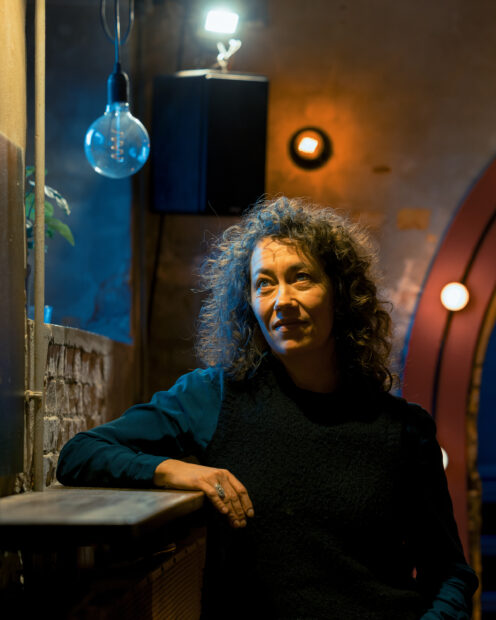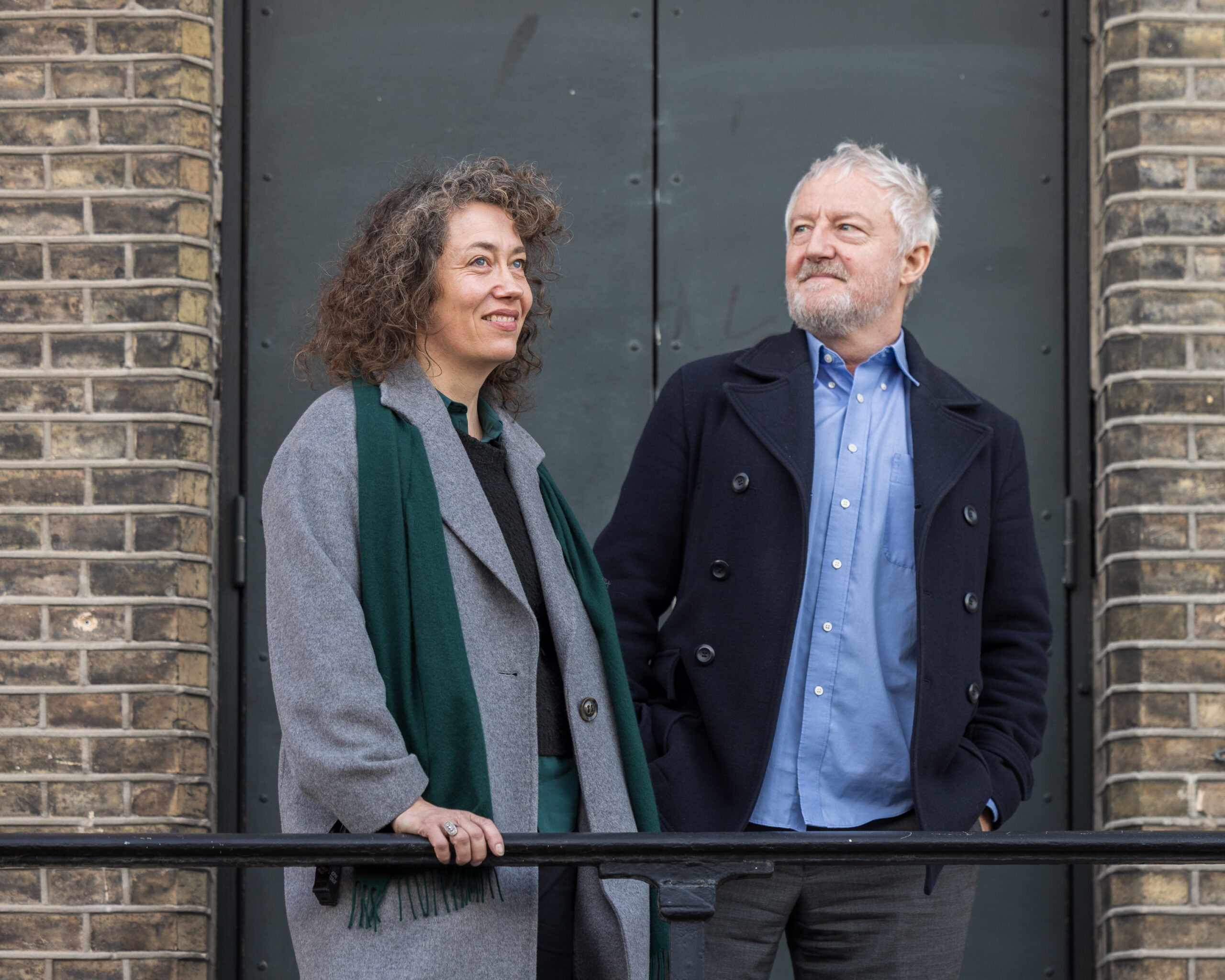English Australian writer, theatre director, and Butoh dancer Stuart Lynch contributes a monthly column titled “The Lynch Interviews” to The Copenhagen Post. In this series, he engages with prominent internationals residing in Denmark or Danish individuals with a global perspective. For the February edition, he sits down with Miriam Frandsen, curator of the international arts platform Toaster, housed at ‘Husets Teater’ in Vesterbro.
There’s an Australian expression, “No Flies on You,” which describes someone who is sharp, not easily fooled, and always active. Since leaving university in 2003, you’ve taken on roles as a teacher at the Danish National School of Performing Arts, an International Project Manager at the CPH STAGE, festival, dramaturg at the Royal Theatre l, and now the curator of the internationally connected performance platformToaster —a collaboration between Husets Teater and Den Frie Centre for Contemporary Art. Certainly, no flies can land on you!
Yes, but it hasn’t felt overwhelmingly busy because I’ve loved everything I’ve done. When you’re passionate about your work, it doesn’t feel like ticking off achievements—it’s more of a continuous, natural flow of collaborations, where one opportunity leads seamlessly into the next.
And is collaboration an essential part of your process?
Absolutely. Collaboration has been at the heart of everything I’ve done. I’m naturally curious and thrive in a team dynamic. Any success I’ve had is largely due to the collective effort around me, and that’s very much the case with Toaster—it’s a shared achievement.
Can you tell us more about Toaster?
Toaster was founded in response to an open call from the arts council in 2020, seeking a new international guest performance stage in Copenhagen. The vision was to support Denmark’s independent arts scene in an interdisciplinary setting—functioning both as a theatre and an exhibition space.
From the outset, Toaster has embraced theatre, performance, and visual arts, merging disciplines through exhibitions that function as performances and vice versa. We’ve staged black box productions and site-specific works, challenging spatial conventions—hosting live installations in theatre spaces and durational performances where audiences move freely. We’ve invited visual artists into the theatre and theatre artists into exhibition halls.
Moving forward, we’re committed to this cross-disciplinary approach in performance. Working across two distinct structures and cultures presents challenges, but it’s also our greatest strength. We gain new insights into how we create and produce by constantly learning from one another.
How does the Toaster program challenge traditional audience expectations and experiences?
A significant number of our performances are interactive, encouraging audience participation—but always on a voluntary basis. It’s important to me that we engage the audience in ways that spark new questions, sometimes even by provoking them a little—but always with care and respect.
What role does audience interaction play in your curatorial process?
We don’t specifically seek out projects that include audience interaction, but many performance artists naturally focus on it. The emphasis on the here and now—where audiences and performers share the same space—dissolves traditional barriers, such as the fourth wall, making the experience more immediate and immersive.
How do you ensure that your work remains culturally diverse and inclusive?
Diversity is a key focus for us. In our curatorial process, we consider factors such as age, experience, ethnicity, and gender—not as a box-ticking exercise, but as one aspect of a larger framework. In January, I completed my leadership diploma with a 50-page thesis on Toaster’s diversity efforts, and this is something we continue to work on actively.
Does this also include exploring LGBTQ+ and gender-based themes?
Absolutely. We strive to curate a lineup of artists that reflects the society we live in—a society that is far more diverse than just white men in their 40s and 50s. We are particularly drawn to artists whose stories are rarely told or who offer fresh perspectives on familiar narratives. Toaster should be a space where contemporary voices are heard in a balanced representation
And of course, no conversation about contemporary art curation would be complete without discussing AI and new technologies.
We’re definitely interested in new technologies and how they can shift the audience experience, but it’s always rooted in the artists’ intentions. Some artists are wary of AI, while others embrace it. We’ve done Open Calls on various themes—most recently on performances involving food—and I think an AI-focused Open Call could be fascinating.
How do you think Toaster contributes to the evolution of the performing arts scene, both locally and internationally?
We help elevate performance art as a genre in its own right—rather than something merely added to an exhibition or a fallback for artists who aren’t making “real” theatre. Performance art has deep roots in the avant-garde movement and has always been a vital voice in both the art world and society because it responds directly to the now.
Toaster aims to be a platform for performance art, helping to position Denmark on the international map by curating both Danish and international artists. By doing so, we hope to create a space where larger audiences can engage with thought-provoking and boundary-pushing work.
Speaking of provocative work—are there any particular artists or performances at Toaster that stand out to you?
That’s a tough one because every production has been unique and impactful in its own way. But if I had to highlight a few, I’d say:
Kultuur by Maria Metsalu (a co-production with Kanuti Gildi SAA, Kiasma Theater, and SPIELART Theaterfestival), Vanitas and Lesions, (a performance installation and performance by Jules Fisher), Boys in Sync – Zapfenstreich (a co-production now touring internationally), The performance program at Artificial Optimism (Alexander Tillegreen, Leonie Strecker, Camilla Lind, Eve Stainton,Jessica Ekomane, Ville Laurinkoski, Thjerza Balaj, Miriam Kongstad), Staten by Fix & Foxy, perfoming site specific right now, and the collaboration with external curators as Live Art DK, Warehouse 9 and Storm Møller Madsen. Each of these projects and collaborations has pushed boundaries in different ways, which is exactly what Toaster is about.
Lastly, in such a full schedule—what does a ‘Miriam Frandsen’ do to unwind?
I spend time with my wonderful partner and children and hang out with good friends. That’s essential for me—it’s where I recharge. And I read books and I absolutely love to knit. It’s meditative and creative at the same time.















